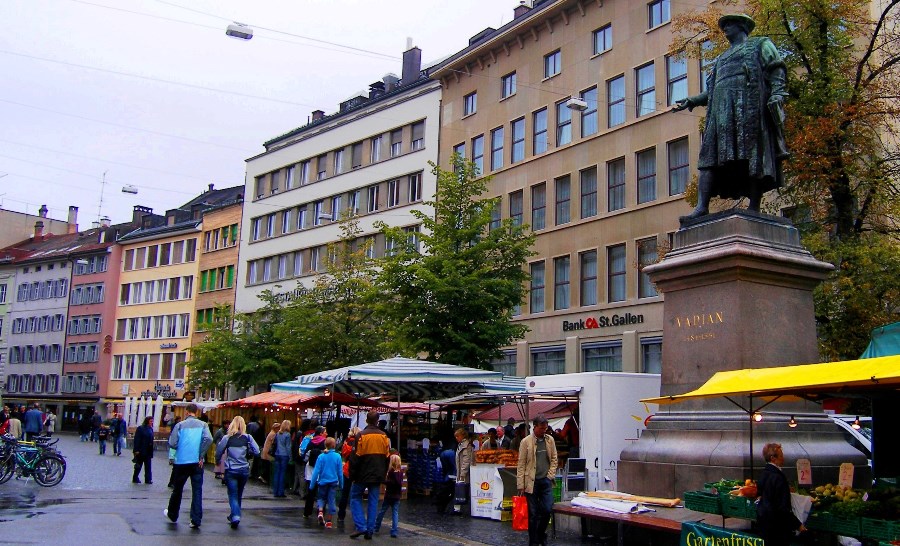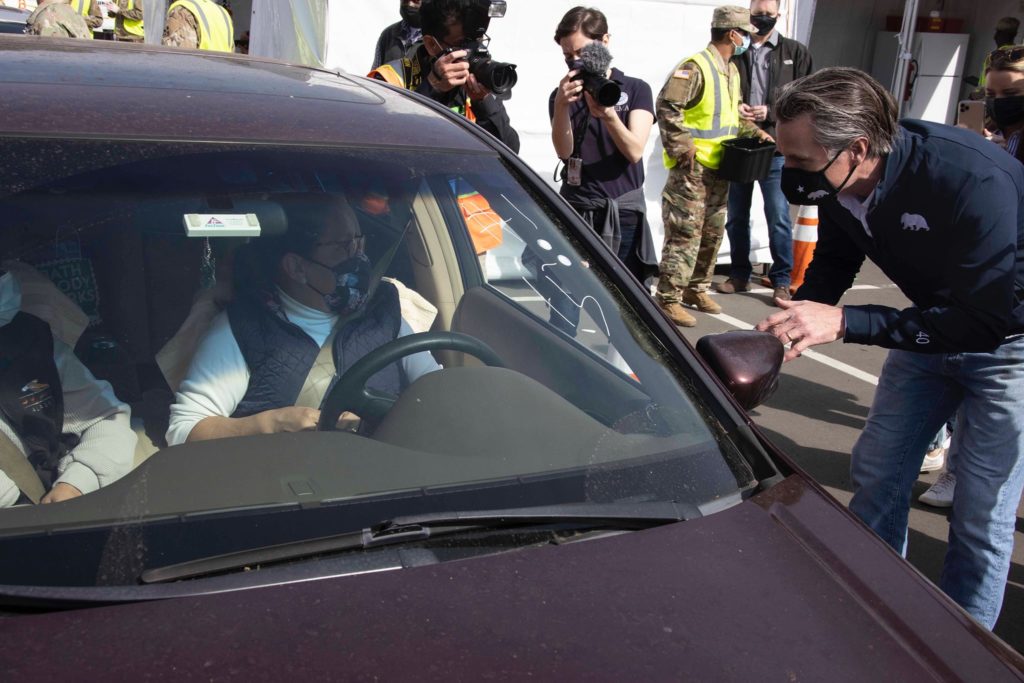
By Greg Aragon
Like a prop from Disneyland or a Harry Potter movie, the Abbey Library in St. Gallen is a magical, surreal place. But, unlike fantasy lands this historic bookroom is all real, down to the last 1,400-year-old handwritten manuscript and 2,000-year-old mummy.
Last summer I discovered St. Gallen, along with its famed library, as I made my way through Eastern Switzerland, bound for Lake Constance.
My visit began with a cab ride from St. Gallen Train Station to the classy, 113-room Einstein St. Gallen Hotel, where I checked into a suite overlooking town. The elegant, first-class hotel is located next to the UNESCO World Heritage Site Abbey District St. Gallen. Highlights of the property include the Einstein Gourmet fine dining restaurant; and the state-of-the-art Migros Fitness Park Einstein, with an ultra-modern wellness area, an atmospheric pool, an ice grotto, steam bath and full-service spa.
My room at the Einstein was flowing with regal charm and covered in rich, glossy wood and shiny Italian marble. Besides a postcard view of 18th century structures, the room offered a big bathroom with shower and tub, free Wi-Fi, huge TV, and a comfortable queen-sized bed. The room’s best feature was its proximity to old town. I took advantage of this the next morning when I met my city tour guide in the lobby.
The walking tour began at the statue of Irish monk Gallus, who founded a hermitage in the area in 612. A hundred years later an incredible Baroque abbey was constructed in his honor at the site and named St. Gallen. Today the abbey consists of an incredible cathedral, the abbey library and a series of old monastery buildings. The abbey precinct was declared a UNESCO World Cultural Heritage Site in 1983.
The cathedral, built in 1755, is a masterpiece of baroque architecture. It is highlighted by a double-tower façade standing 223 feet. The interior features giant pillars, unique wooden confessionals, hand-painted ceilings and walls, stained glass windows, and priceless sculptures.
But the centerpiece of the abbey is St. Gall’s Abbey Library, which many consider the finest secular Rococo hall in the world, replete with magnificent burnished woodwork, undulating balconies and ceiling frescoes. Built in 1758, the library contains 160,000 priceless books and manuscripts, as well as an unforgettable interior.
To enter the library, we stashed our cameras and put on fluffy slippers to protect the original inlay wooden flooring, which happens to be an exact mirror copy of the ceiling. As I slid across the creaky surface, I passed 1,000-year-old Latin texts; books handwritten by monks in the late 1700s; the oldest blueprint in the world, created in 819; an eighth-century bill of sale for the abbey property; and one of the oldest maps in the world from the year 850.
Changing exhibitions show handwritten and illuminated texts, including Bibles, liturgical works, prayer books and biographies of saints from as early as the eighth century A.D.; and works depicting the daily lives of resident monks, which provide insight into abbey life from the ninth century through the Middle Ages.
To leave the abbey we passed through the remains of a fortified gate built in 1566. We then entered the newer part of St. Gallen, where we found an interesting mix of buildings from the 16th to 18th century, many the result of the city’s textile boom beginning in the 1500s.
Our guide pointed out fascinating bay windows lining the streets. A signature of wealth in the 1700s, the windows feature unique carvings, such as men sticking their tongues out at neighbors, as to say “I have more money than you.”
After the tour I took a swim at Drei Weieren (Three Ponds), an oasis in the middle of the city. The ponds were built by monks between the 17th and 20th centuries to provide water to put out fires during blazes and also as a water supply for the city. Today the ponds are beloved swimming areas for locals in summer and provide ice skating in winter. And with their art nouveau bath houses and surrounding landscape, they make for a scenic excursion.
For more info on visiting St. Gallen and other parts of Switzerland, visit myswitzerland.com. For info on flying there, visit Swiss International Air Lines (SWISS) at: swiss.com.






